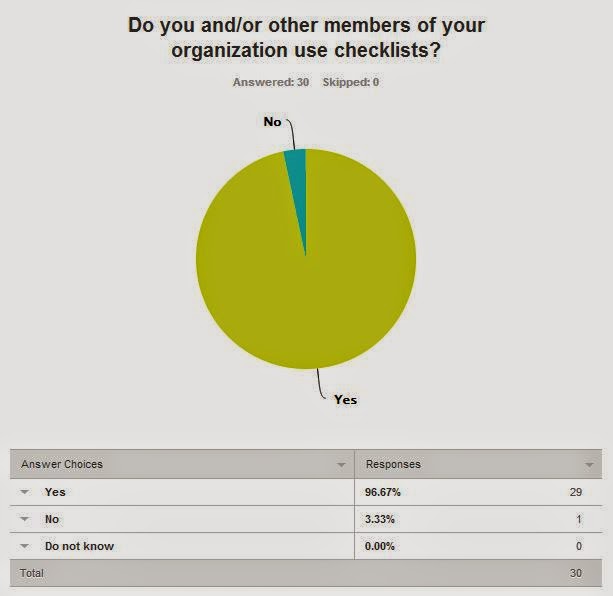You cannot overstate the importance of a good checklist. It
is often critical to the proper fulfillment of necessary steps in a process.
This became painfully clear to Boeing in its final
evaluation of the Model 299 bomber, prototype of the B-17 Flying Fortress, in
1935. Overlooking a simple step – releasing the elevator lock – caused to the
plane to stall and crash, eventually leading to the deaths of both pilots. Pilots
at Boeing came up with four checklists to insure nothing was overlooked in each
stage of flying an aircraft -- takeoff, flight, before landing, and after
landing.[1]
Justin Fox, Executive Editor of the Harvard Business Review
Group, discusses Atul Gawande’s The
Checklist Manifesto, and provides his own types of checklists in the
article “What Sort of Checklist Should You Be Using?”[2]
The types mentioned are: task lists, troubleshooting lists, coordination lists,
and discipline lists. (Follow the link in the footnote to read Fox’s short
article.)
I recently conducted a survey of members of the Mile High Chapter of the Association of Legal Assistants about the use of checklists. All but one respondent said checklists are used in their organization; a majority agree checklists are a best practice in their organization; and most make their own checklists. The results are shown graphically below.
[1]
History of the Pilot’s Checklist – Why
checklists now help ensure flawless execution, http://bit.ly/1lrqbJZ (last visited Apr 3,
2014).
[2]
HBR Blog Network, http://bit.ly/1k4cW4J (last visited Apr 3,
2014). (Gawande is a general and endocrine surgeon at the Brigham and Women’s
Hospital in Boston. The Checklist Manifesto is available at Amazon in hardback,
softback and on Kindle.)




No comments:
Post a Comment